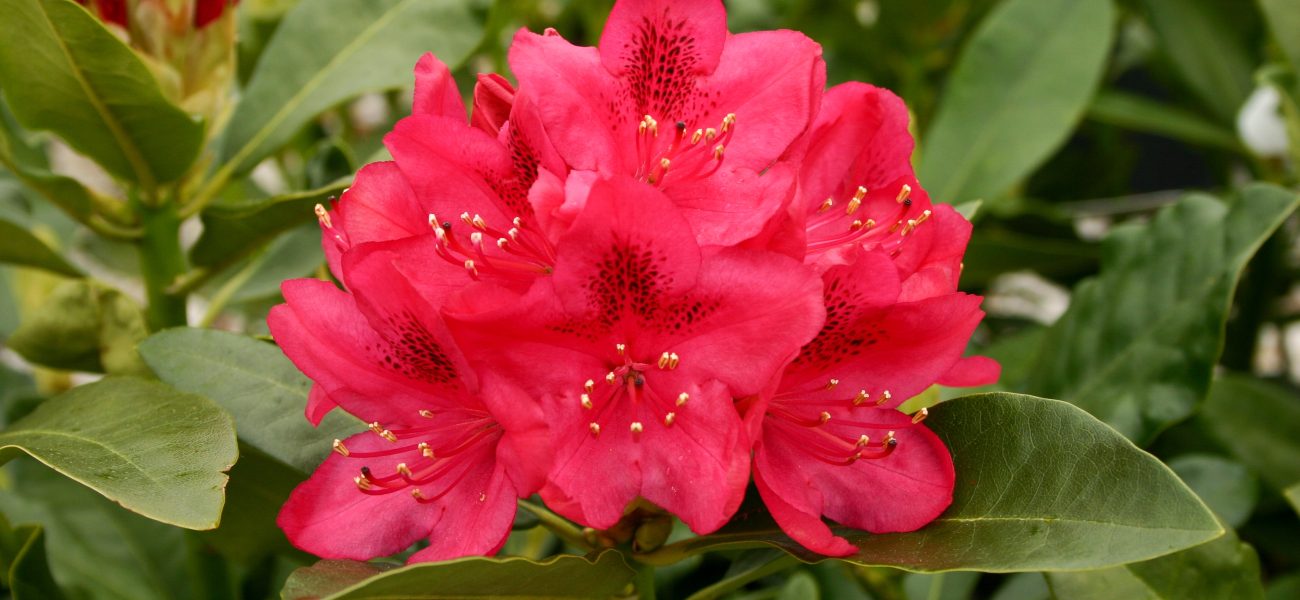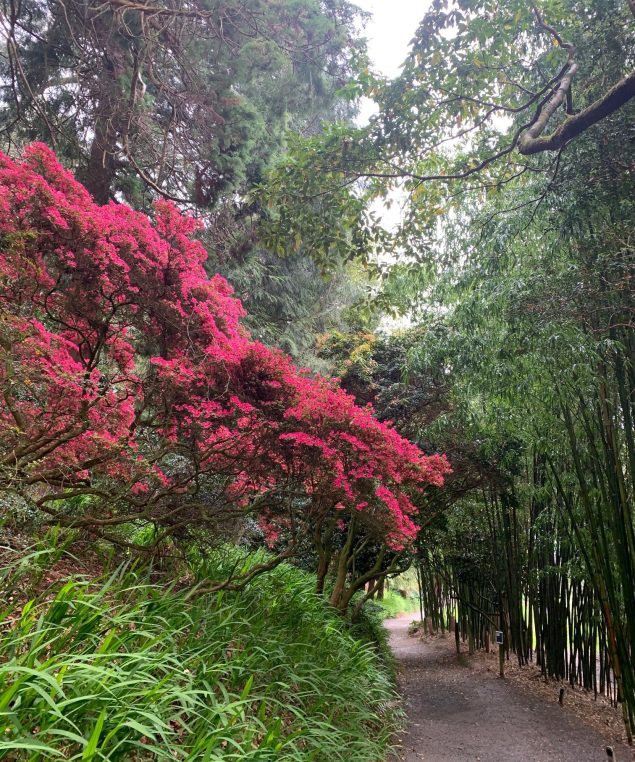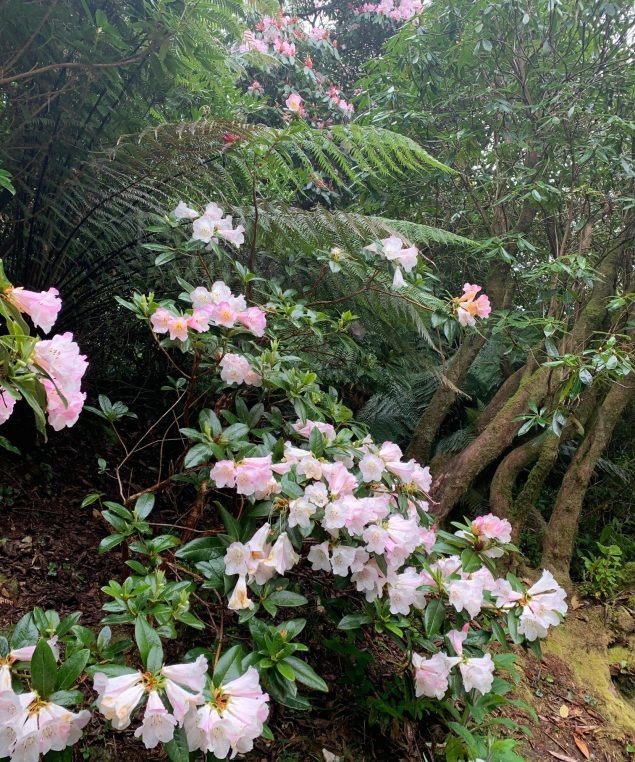
Rhododendrons and Azaleas
We are often asked what the difference is between rhododendrons and azaleas. All azaleas are rhododendrons. Azaleas are part of the rhododendron genus, which is one of the largest in the plant kingdom. There are more than a thousand species of rhododendron, many thousands of hybrids, and the number will continue to rise as new varieties are produced. The RHS lists over 28,000 cultivars in the International Rhododendron Registry. They range in size from tiny alpine forms to huge trees as tall as 80 metres. In gardens, species rhododendrons are rarely grown compared to the hybrids. If you consult any RHS index for Azalea, it will refer you to Rhododendron, the correct name, but Azalea is commonly used for all the deciduous species and their hybrids, and many of the smaller-leaved evergreen varieties which are referred to as Japanese azaleas.

Azalea Panda - an example of a Japanese azalea
Japanese azaleas are small compact shrubs arising mainly from Japanese species. After ten years they reach about 80cm in height and a bit wider than tall. They are more tolerant of open sites and can look spectacular planted en masse on a slope or around a rockery. The flowers smother the bush in a sheet of colour with scarcely a leaf visible. The potted azaleas which appear as houseplants around Christmas time are known as Belgian azaleas. It is tempting to replant them in the garden, but they have been bred to perform as houseplants and are often not hardy enough to survive and flower properly outside.

Azalea Arnesson Gem - an example of a deciduous azalea
Deciduous azaleas are completely different. They are taller, up to about 2m, open upright shrubs which look pleasant but unremarkable when not flowering. The flower clusters appear in spring in shades of cream, yellow and orange. The strong and exquisite fragrance is their main appeal. Be careful when choosing though, as some of the darker flame-coloured varieties have little fragrance. They are perfect edge-of-woodland shrubs.

Azalea Nova Zembla - an evergreen rhododendron
Evergreen rhododendrons are available in a wide range of size and colour to suit any garden. We are blessed in Cornwall with gardens open to the public to share the spectacle of large and mature specimens in bloom, but there are smaller versions available to the gardener with less space, or time. The Yakushimanum hybrids are a popular group of compact and free-flowering shrubs for the smaller garden.


Trebah Garden
Of course, sooner or later, an evergreen rhododendron would be crossed with a deciduous azalea. In 1892 the name Azaleodendron was coined for these plants. Many crosses were made, and many hybrids raised, but very few survive today. They tended to have unattractive foliage and lacked vigour, though some had striking flowers and good foliage.
Inkarho rhododendrons are much-trumpeted as being lime tolerant, but a bit of explanation is needed here. These are all grafted plants rather than plants bred to tolerate lime. The rootstock originates from a plant growing in a German lime quarry onto which choice garden varieties are grafted. They will not survive in a truly alkaline soil but will cope with a neutral or barely alkaline soil. They require more feeding than other rhododendrons.
Rhododendrons thrive in cool, woodland conditions and acid soil. They like the soil to be always moist, well drained and rich in leaf mould and organic matter. They are shallow rooted and make a wide disc of fine feeding roots around the stem, or trunk. Care must be taken not to allow the roots to get damaged or dry out because they may struggle to recover. A mulch of leaf mould around the base of the plant is ideal protection. They require little, if any, feeding. If you must move a rhododendron, dig out a wide and shallow root ball with the plant, not a flowerpot shaped cone around the trunk.
The rhododendron is the national flower of Nepal where it has various culinary uses. The flowers can be pickled, used to make squash, or added to fish curries to soften the fish bones. However, the pollen and nectar of some species, the dreaded Rhododendron ponticum, contain a substance called grayanotoxin which can be transferred to honey. In parts of Nepal and Turkey this is known as “mad honey” and consumed as a recreational drug because of its hallucinogenic properties.



